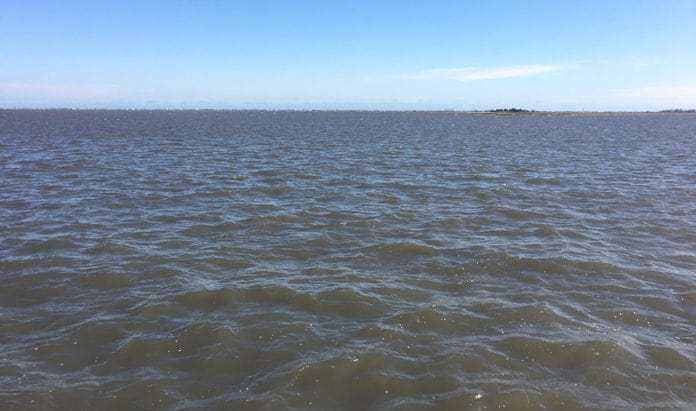
BRICK – What do you like about Barnegat Bay? What don’t you like about Barnegat Bay? What has changed over the past 15 years or so, and if there has been a change, has it been for the better or worse?
These were the questions posed by the Barnegat Bay Partnership (BBP) in the first of a dozen or so outreach programs planned between now and June designed to develop a CCMP (Comprehensive Conservation and Management Plan) – or a community-developed road map – to help protect and restore the bay.
The first CCMP was adopted in 2002 by the BBP, which is one of 28 National Estuary Programs administered by the federal Environmental Protection Agency.
BBP is a department of Ocean County College, and they work in a partnership of federal, state, municipal, academic, business and private organizations to help restore, protect and enhance the Barnegat Bay ecosystem.
“A lot has changed since our CCMP was first adopted in 2002,” said BBP special events coordinator Betsy Hyle from the Brick Library last week, where the first of a dozen or so outreach programs was held.
“[Superstorm] Sandy, climate change, more storms and more sea level rise to name a few, which we have to incorporate into our new CCMP,” Hyle said.
Since 2002, BBP has reworked strategies and objectives and added new actions, and has identified four priority areas:
- Water Supply, to ensure adequate water supplies and flow for ecological and human communities now and in the future.
- Water Quality, to protect and improve water quality throughout Barnegat Bay and its watershed by addressing the causes of water quality degradation to achieve swimmable, fishable and drinkable water, and to support aquatic life.
- Land Use, to improve and sustain collaborative regional approaches to responsible land use planning and open space protection in the watershed that protect and improve water quality, water supply, living resources, soil function and hydrology.
- Living Resources, to protect, restore and enhance habitats to ensure healthy and sustainable natural communities of plants and animals now and in the future.
BBP public outreach coordinator Karen Walzer said that the four priority areas are all related and affect each other.
“We have a lot more understanding of Barnegat Bay science with the help from our partners and the NJ Department of Environmental’s Ten-Point Plan, which has funded a lot of good projects,” she said.

Introduced in 2010, the Ten-Point Plan includes water quality monitoring, stormwater management, the purchase of open space along the 660-square mile Barnegat Bay watershed, and more.
“The most important thing people can do at the local level is to look at their own yard and make it like a sponge, try to use pervious pavement, make a rain garden and use rain barrels to capture water,” she said. “These actions will keep the water on the property and not run off and pollute the bay.”
Shari Kondrup of the Brick Township Municipal Utilities Authority was a guest speaker during the outreach event.
Using PowerPoint slides, Kondrup said the average person uses a gallon of water to brush their teeth, 15 to 30 gallons for a shower, 30 gallons to do a load of wash, and 180 gallons to water a lawn.
Water is also used to manufacture goods, she said. It takes 39,090 gallons to make a car and four tires, 62,600 gallons to produce a ton of steel, and two gallons to manufacture a 16 oz. water bottle. “And that doesn’t even include the water,” she said.
Kondrup said it was important to save water for future generations by fixing leaky faucets, watering with soaker hoses, using reusable water bottles, shutting the water off while brushing your teeth or while shaving, and more.
“Ninety-seven percent of the Earth’s water is saltwater, two percent is fresh water that we can’t use, such as ice and snow, so that leaves just one percent as usable,” she said.
The growing population of Ocean County makes the area more vulnerable to water shortages, and as the population grows, more impervious surfaces are created and there is less area for water to absorb into the ground, she said.
Bob Duane of Point Pleasant came to the outreach program because he said he is interested in learning more about Barnegat Bay since he is in the boating business as a marine surveyor.
“I’ve got to keep up on this,” he said.
Before BBP adopts a new CCMP there would be a formal public hearing for final review and feedback. The new CCMP would “take us well into the future,” Hyle said. “We don’t want to miss anything.”
The next BBP outreach programs are scheduled for the Toms River library on Feb. 21 (which will feature live animals from Cattus Island Park for a discussion about the bay as a habitat); the Lacey Library on Feb. 27; and the Stafford Library on March 1. All programs will run from 4 p.m. to 7 p.m.







